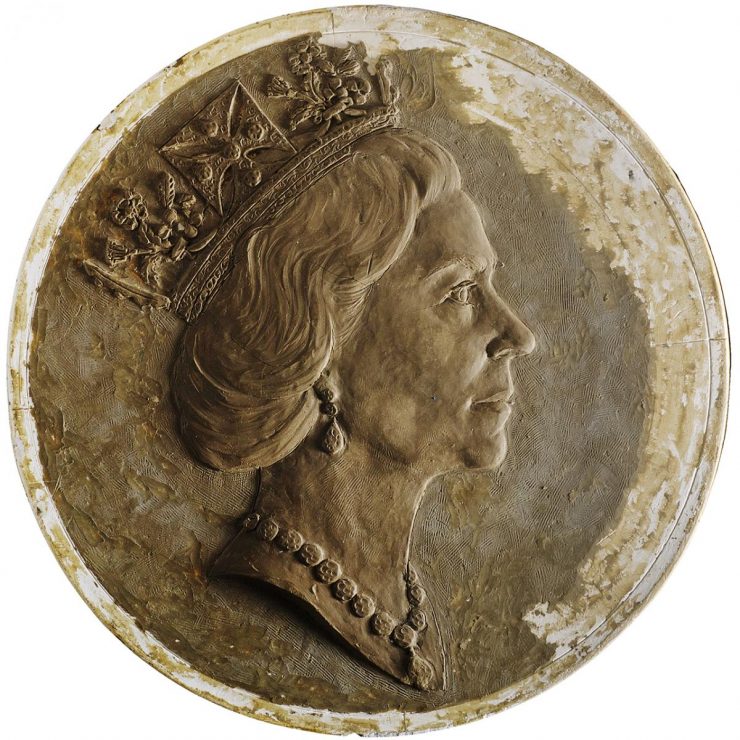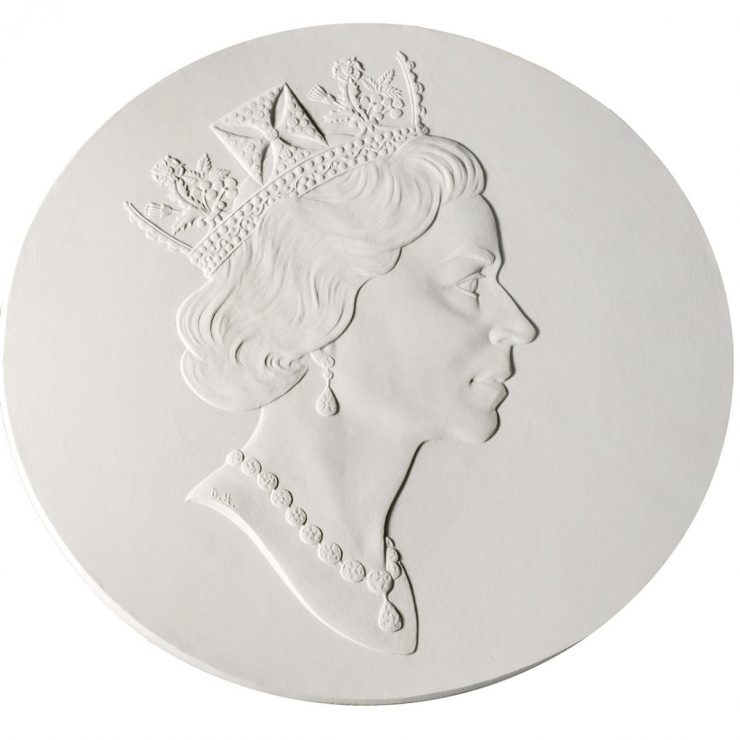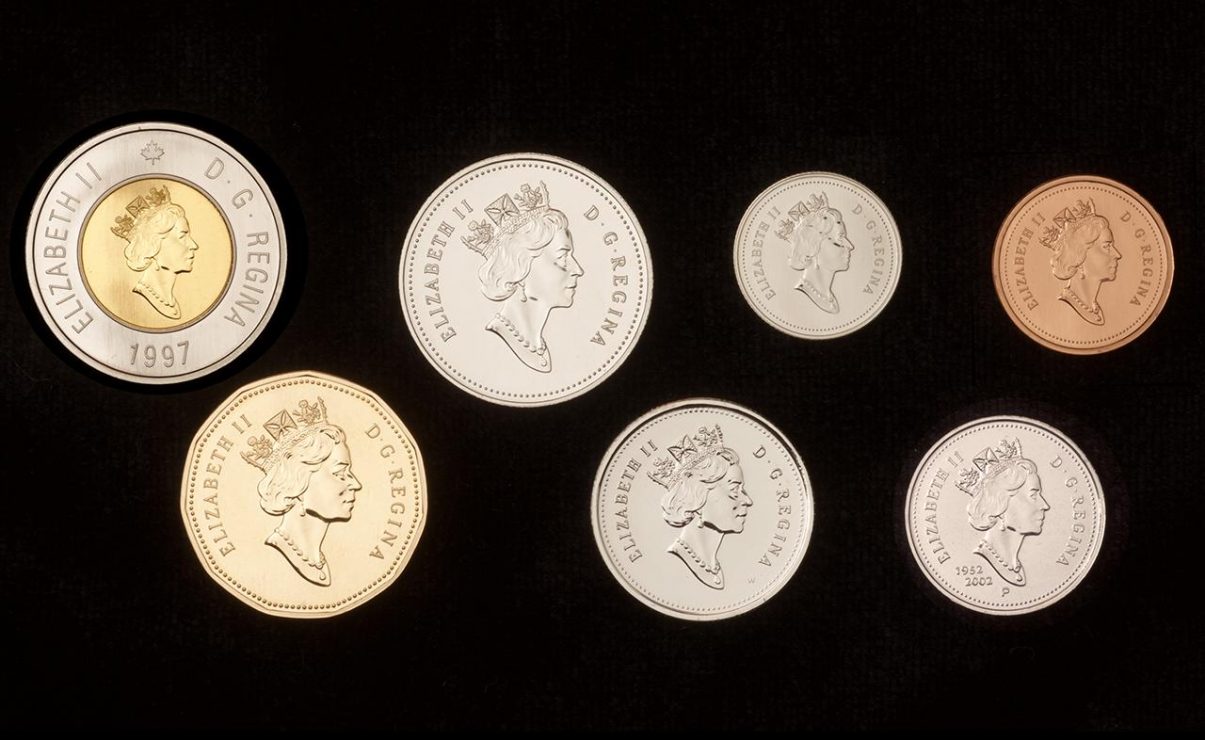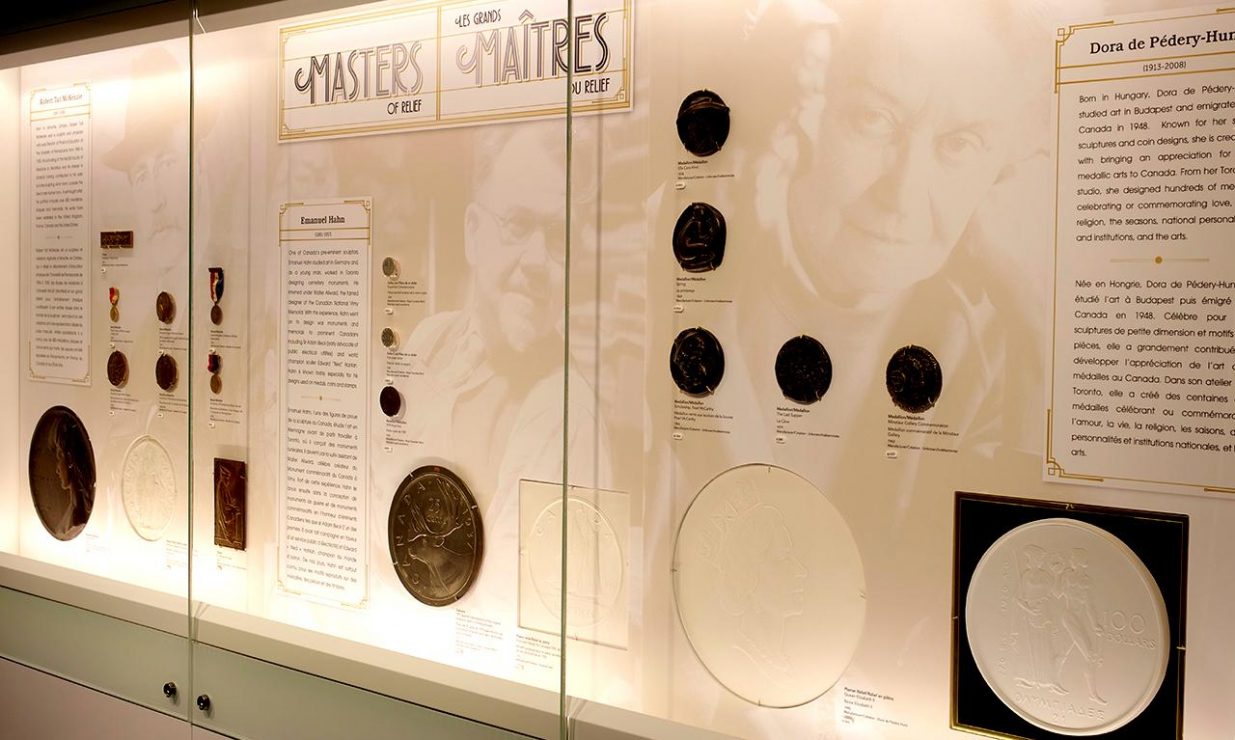Sculptor Dora de Pédery-Hunt
You will not see Dora de Pédery-Hunt’s signature on any coin, but you will see her initials on the Queen’s shoulder.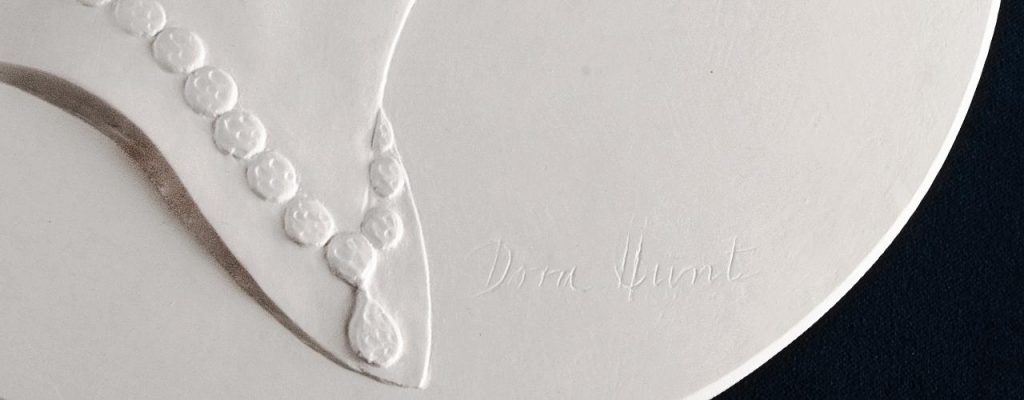
Limited Edition plaster reproduction of working model, #21 of 275. (NCC 2009.020.003)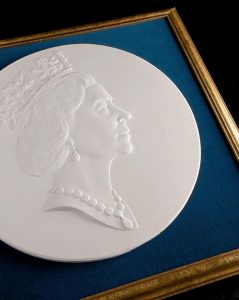
Dora de Pédery-Hunt’s work is as familiar as the change that jingles in your pocket. In all likelihood, you have come in contact with her work while using coins to pay for your morning cup of coffee. Dora de Pédery-Hunt was the first Canadian artist to design and sculpt an effigy of Queen Elizabeth II for coinage. Incidentally, this was the first time someone other than a British citizen had designed an official depiction of Queen Elizabeth II for this purpose.
When the Royal Canadian Mint (RCM) selected Dora’s design, she painstakingly began working on a clay model. All of the details had to be carefully considered, as the depth of the relief had to be suitable for producing coins. This model was then captured in plaster, where additional refinements could be made. Any errors could easily be corrected at this stage with the addition of more plaster. The size of the plaster is usually several times larger than the actual coin in order to capture all of the fine details.
At the time, there were many steps between the plaster model and the production of coins. Today, the process has been significantly refined. The plaster model is scanned in 3D and any final corrections or enhancements can be made digitally. Guided by this digital file, an engraving machine cuts the design into a piece of steel at the correct size of the coin. Known as a reduction punch, this piece of steel is then used to make the dies which will actually strike the coins. The tremendous pressure used to strike the coins wears down the dies, so the mint will periodically use the punch to create new dies.
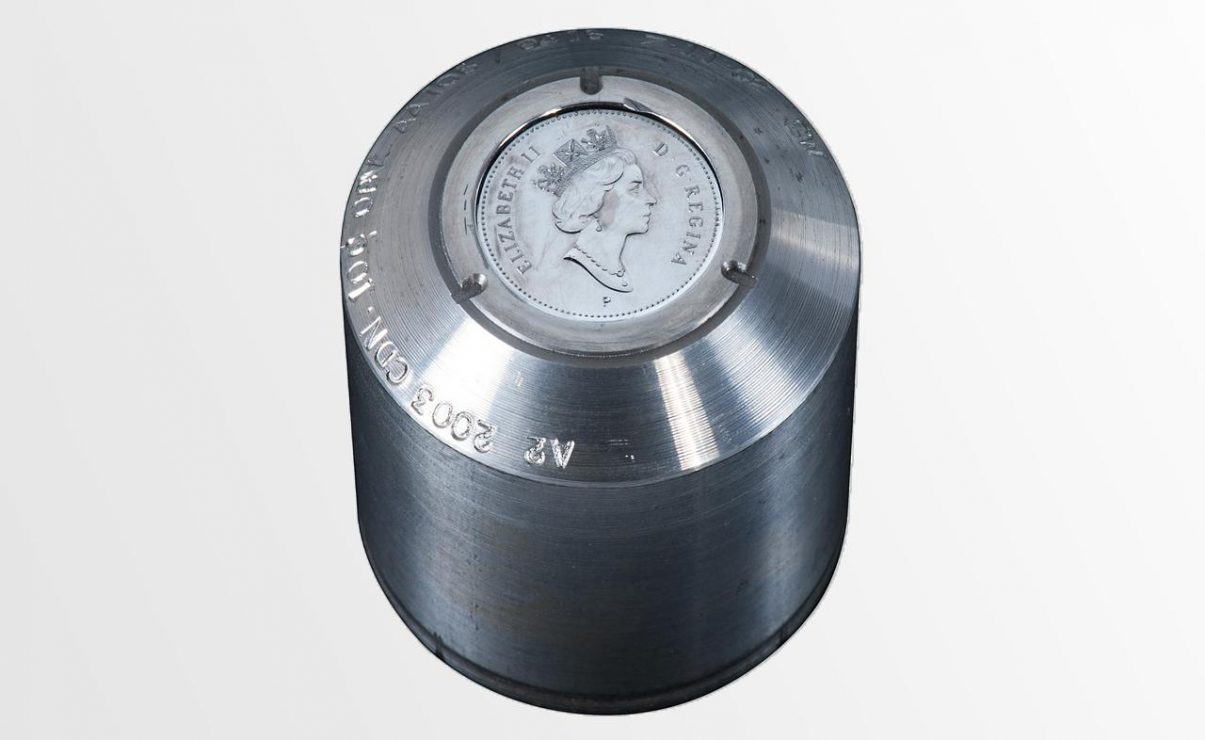
In 1999, the “P”, under the portrait on this punch, was added by the RCM to indicate a change in metal from nickel to multi-ply plated steel. (NCC 2010.058.006)
This portrait has appeared on all Canadian coins minted between 1990 and 2003.
The Museum Blog
What’s Up Next for 2019?
By: Graham Iddon
Instead of bragging about our visitor statistics and the popularity our programming (both great!), we’ll talk about what’s coming up for early 2019.
Boer War Siege Money
By: Graham Iddon
As in any siege, Mafeking quickly began to run short of most things, not the least of which was cash.
Unpacking the Collection 11
By: David Bergeron
The size of the 1-cent coin was reduced to save on the cost of copper. At the same time, there were proposals to mint Canadian coins out of cheap and abundant nickel.
A Good Deal
By: David Bergeron
In Canada playing cards were used as form of emergency money at a time when the colony constantly suffered from a shortage gold and silver coins.
Unpacking the Collection 10
By: David Bergeron
During the first international assembly of the Ligo in 1946, a decision was made to introduce a common world currency with an internationally stable value.
Unpacking the Collection 9
By: Raewyn Passmore
Wars have been fought to control its trade and gifts of it have been made to ensure peace. It has even been used as currency.
